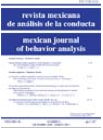BEHAVIOR THEORY TODAY: A RETURN 10 FUNDAMENTALS
Main Article Content
Abstract
While behavior modification as an applied art is expanding vigorously, the iaboratory study of animal learning, which provided much of its rationaie, sn the midst of a downward reappraisal. ln the 1 940s and 5O’s behavior theory based on animal learning was at the center of experimental psychology. It is no longer.
The deCentralization in academic psychology was accompanied by a widespread realization that the boldly proclaimed laws of behavior might be more accuratelV desCribed as interesting phenomena with unknown boundary conditions. Our new position is, 1 think, healthier than the oid. Giving up pretentions makes it easier to reexamine fundamental questions.
1 would Iike to discuss the bearing of certain recent developments Qn three questions fundamental to behavior theory:
What reinforces a response? Two recent development of great interest and potential are Richard Herrnstein’s formulation of the reiative law of effect and John Platt’s analysis of shaping.
What produces stimulus control? Leo Kamin’s admirable series of experiments Qn overshadowing and blocking, and Robert Rescorlas work on the stimulus-reinforcer relation have greatly changed our conceptions of the necessary conditions for stimulus control.
How do the stimulus-rein torcer and response-rein torcer relations combine in the controlofbehavior? Autoshaping, likethe Brelands observations on misbehavior, forne us to consider the joint action of the stimulus-reinforcer and response-reinforcer relation. It alerts us to the possibility that the stimuius-reinforcer relation can exert a dominant role in the development and maintenance of directed actions of the whole organism.
One can abstract a theme from these diverse developments. The effect of a reinforcer depends on a context. It 5 not enough to know that a certain movement or stimulus was followed by a reinforcer. it is necessary to learn how to incorporate the setting of that event within an extended interval. Moreover, a reinforcer occurs In an immediate context that includes multiple stimuli bearing different relations to the reinforcer. We have todo more than recognize multiple determination, we have to learn its rules.
